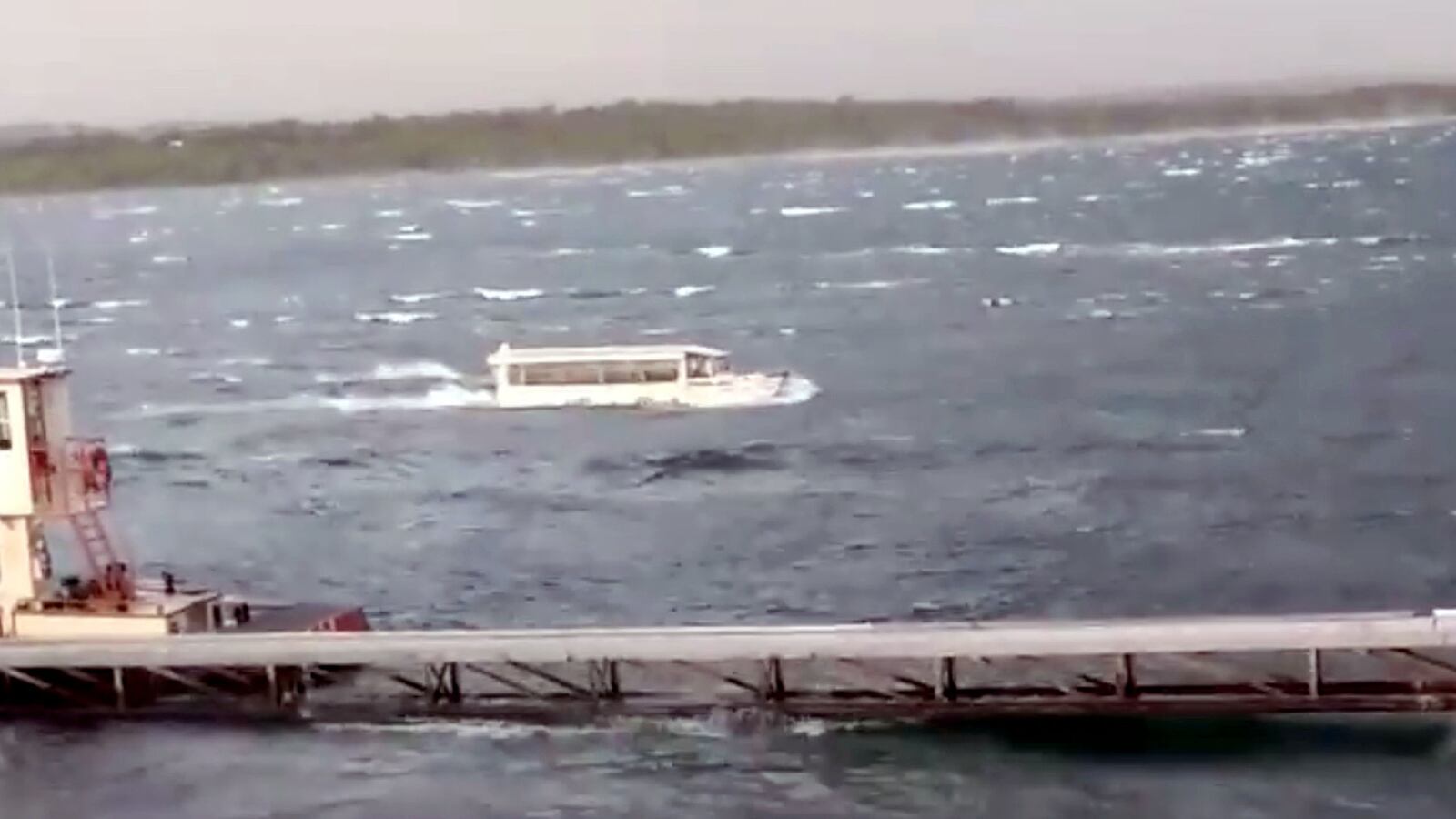Seventeen people, including children, perished when a duck boat capsized in a lake near Branson, Missouri, Thursday night—the deadliest disaster of its kind since 1999, when the Miss Majestic sank in Arkansas, killing 13 passengers.
“Duck boats are death traps,” Andrew Duffy, a lawyer whose firm handled two cases related to duck-boat fatalities in Philadelphia, told the Associated Press. “They’re not fit for water or land because they are half car and half boat.”
Around 7 p.m. Thursday, the doomed duck boat was carrying 29 passengers and two crew members when stormy weather swept over the area, turning what had been a calm pleasure cruise on Table Rock Lake into a fight for survival. Two vessels operated by Ride the Ducks, a Branson-based tour operator, were soon hit with 3-foot waves and 65-mph winds, The Kansas City Star reported.
Harrowing video footage of the disaster shows one of the duck boats getting pummeled by wind and waves, then eventually capsizing and slowly sinking in 40 feet of water. It eventually ended up about 80 feet below the surface.
“They’re all hanging on for dear life in here, too, you know it,” an onlooker says during the video.
Fourteen people managed to make it to safety after the amphibious vessel capsized. The passengers were adults and children, ranging in age from 1 to 70, according to Missouri State Highway Patrol Sgt. Jason Pace. It’s unclear if they were wearing life vests at the time.
“We are deeply saddened by the tragic accident that occurred this evening at Ride The Ducks Branson,” said a Ride the Ducks spokesperson.
A couple aboard a showboat on the lake witnessed the incident and told The Kansas City Star they saw an unconscious woman float to the top of the water after the boat sank.
“She was pregnant,” Trent Behr told the newspaper.
In the wake of the tragedy, Ride the Ducks stressed that the safety of its guests and employees is a “number one priority.” But the company, which also operates in Georgia and Pennsylvania, has a history of fatalities on land and water.
In 2010, two Hungarian tourists drowned aboard a Philadelphia duck boat after the vehicle hit a barge on the Delaware River, The Philadelphia Inquirer reported. In 2015, a duck boat driving on a Center City street in Philadelphia struck a 68-year-old woman, crushing her to death.
The victims’ families filed wrongful death lawsuits against Ride the Ducks and its parent company, Herschend Family Entertainment. The litigation resulted in a $17 million settlement for the Hungarians and a $15 million settlement for the pedestrian.
The lawyer behind those lawsuits, Robert Mongeluzzi, told The Kansas City Star that duck boats should be banned indefinitely. “They kill on land and they kill on sea,” Mongeluzzi said.
“It’s sort of like getting out of an airplane,” Robert Mongeluzzi told the newspaper. “This is not an open-sided boat where everybody can just pitch themselves over the side readily.”
Canopies are a key feature of duck boats, and the National Transportation Safety Board issued a warning about them after the 1999 incident in Hot Springs, Arkansas. Survivors of that accident on Lake Hamilton said it took 15 seconds to a minute for the boat to sink. Six passengers survived, and the NTSB concluded the vehicle was faulty before the incident.
“If the vehicle had not had a canopy, the passengers would not have had a barrier to vertical escape,” the NTSB said in a report. “They would not have been trapped inside the vehicle, and fewer passengers might have been killed. The Safety Board therefore concludes that the canopy on the Miss Majestic was a major impediment to the survival of the passengers.”
The report recommended that a form of backup buoyancy be added to all duck boats, and that canopies be removed from vessels that lack the extra buoyancy. But the NTSB can only make recommendations to the Coast Guard, which oversees all nationwide water travel.
“The problem with canopies is that if you are wearing your life preserver and there is a canopy and the boat capsizes then, the floatation device will take you up in the canopy, pinning you inside the vessel,” Mongeluzzi told The Kansas City Star. “If you don’t wear your life preserver, then you don’t have the floatation to get to the surface if the boat sinks.”
Duck boats, which have become a hit with tourists, weren’t created for recreational use. During World War II, General Motors invented the DUKW vehicle, essentially a boat with wheels, to transport supplies from sea to land in war-torn Europe, according to CityLab.
Two Wisconsin men turned the war relic into a gimmicky attraction, and duck-boat tours soon spread to Boston and other cities during the second half of the 20th century.






